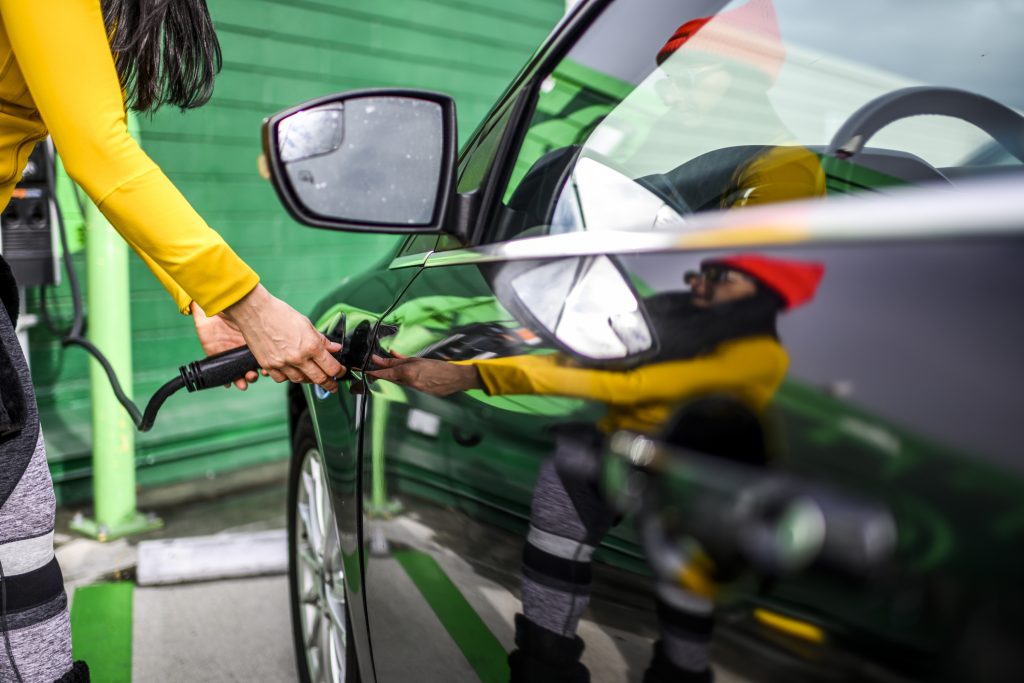
A new report from the Goldman School of Public Policy at U.C. Berkeley calls for investments in electric vehicle manufacturing and infrastructure – along with policy like Buy America to ensure U.S. workers benefit.
In January, General Motors made a major announcement: It’s going electric.
The 112-year-old company plans to end production of diesel and gas-powered cars, trucks and SUVs by 2035, pivoting to selling solely electric vehicles (EV). Not to be outdone, fellow Detroit mainstay Ford Motor Co., also is upping its electric vehicle manufacturing, spending tens of billions of dollars to make more EVs.
But while companies like GM and Ford are leading the way, it’s going to take significant government investment for the entire country to make the pivot, including doing things like installing charging stations and growing battery manufacturing to power all those new EVs.
The good news is that investment will quickly pay off, according to new research from the Goldman School of Public Policy at the University of California, Berkeley.
Pivoting to EV sales by 2035 has the potential to create 2 million new jobs and save households an average $1,000 per year over the next 30 years, the study finds. There are also big potential societal gains, as carbon emissions will lead to less air pollution, preventing 150,000 premature deaths and $1.3 trillion in environmental and health costs through 2050, researchers report.
“There are significant, economy-wide benefits from switching to electric cars and trucks. Many of the health benefits will occur in communities of color and frontline communities that are disproportionately exposed to vehicle pollution,” said report co-author David Wooley, a professor at the Goldman School and executive director of the Center for Environmental Public Policy. “But these benefits will simply not be realized without ambition and leadership on the part of policymakers and decision-makers. Every year America stalls, our vehicle and battery manufacturing industries fall behind in global competitiveness, consumers are saddled with higher costs, and we miss the ever-narrowing window to address the climate crisis and ensure a livable planet.”
And if the United States doesn’t get the job done, others will, the researchers warn. “The U.S. needs a financial commitment on a scale similar to that made in recent years by European countries and China if its hopes to compete for domestic EV and battery manufacturing jobs,” they write.
There is significant interest in Washington to transition the nation’s motor vehicles to EVs. President Biden’s American Jobs Plan includes a proposed $174 billion investment to “win the EV market.” The White House plan includes building a national network of 500,000 EV charges by 2030 while “promoting strong labor, training, and installation standards.” The Biden administration also is aiming to replace 50,000 diesel transit vehicles and electrify at least 20% of the yellow school bus fleet.
Wooley joined with Amanda Myers, and Michael O’Boyle from Energy Innovation to put together a number of policy recommendations to help the U.S. make the switch to EVs. Those recommendations notably include enacting Buy America policies to encourage domestic manufacturing.
Buy America, the authors say, will “help retool U.S. industry to manufacture batteries, EVs, energy storage, and other advanced technologies.” They also recommend “an early focus” on Buy America to “improve global competitiveness, sustain jobs, and support workers in the transition.”
In addition, the researchers argue that the government should play a role in helping to encourage the domestic manufacturing of EVs and supply chain, including when it comes to batteries.
“The case for electric vehicles is stronger than ever before and one of the most exciting findings of this study is the potential for large savings for all households,” said Dr. Nikit Abhyankar, senior scientist at the University of California, Berkeley Center for Environmental Public Policy. “With the right policies and infrastructure, electric cars and trucks will be much cheaper to own and operate.”
